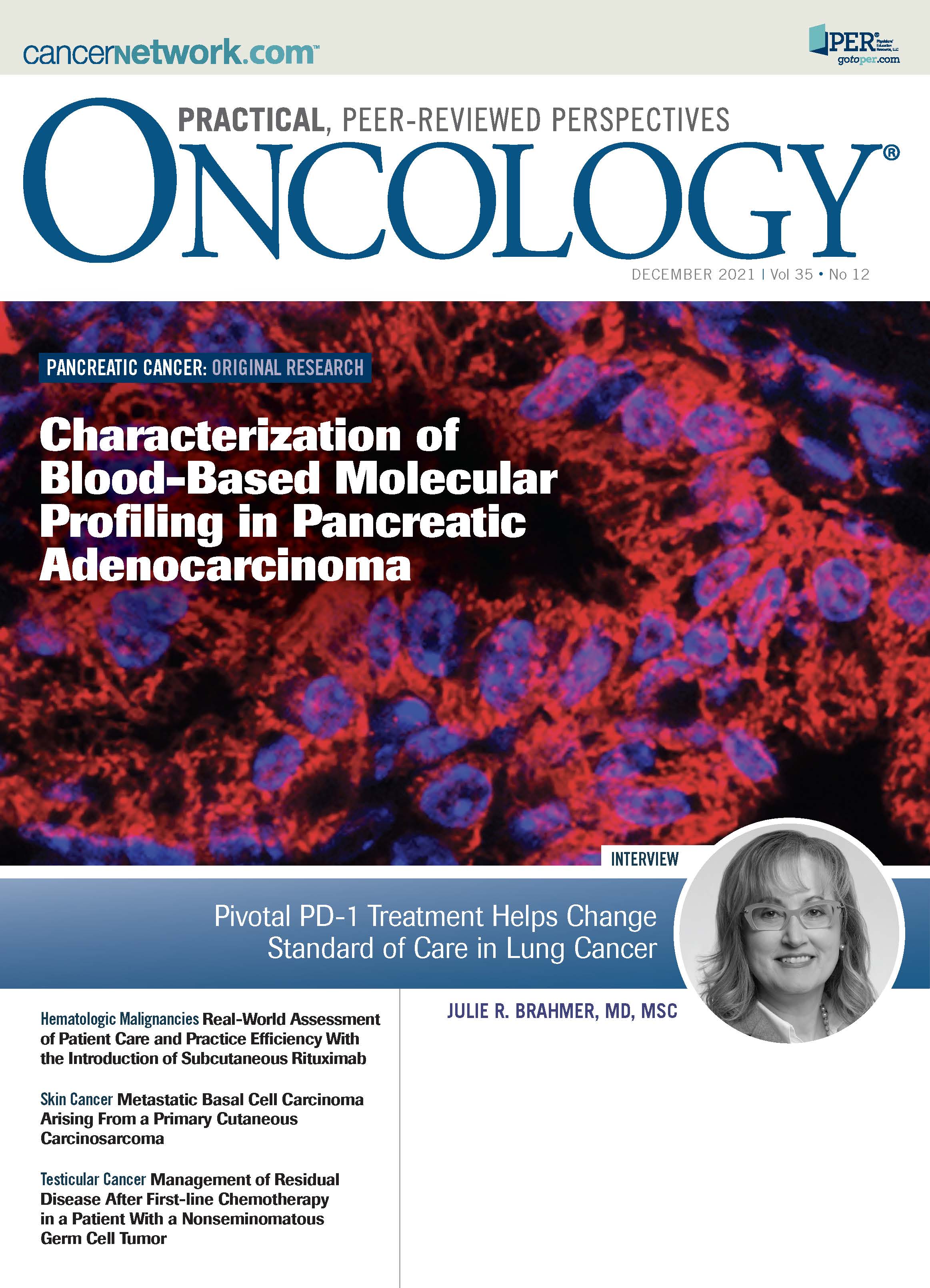The complexity of carcinosarcoma
Sunil A. Reddy, MD gives his perspective on the article, Metastatic Basal Cell (BCC) Arising from a Primary Cutaneous Carcinosarcoma.
The interesting case report: “Metastatic Basal Cell (BCC) Arising from a Primary Cutaneous Carcinosarcoma” summarizes the concept of carcinosarcoma (CS).1 Simply put, a CS has 2 different cancer types in one biopsy specimen.2 This case discusses specifically BCC as the carcinoma component and notes the importance of PTCH gene mutations in guiding the treatment choice of vismodegib (Erivedge).3 This is essential knowledge for medical oncologists and dermatologists who manage BCC. The initial pathology had a sarcomatous component as described but not in the recurrence that was biopsied. Only local therapy was given for the primary in the form of surgery with the patient refusing radiation. Based on this and the literature review, the authors suggest that the prognosis may be good. While the patient does have metastatic disease, a remission was achieved.
Despite modern genomic advances in cancer, we still heavily rely on the hematoxylin and eosin (H&E) stained biopsy slides, and the associated immunohistochemistry (IHC) that is provided to us by our pathologists. CS, especially cutaneous, is a rare entity as described and is fundamentally interesting from the standpoint of the origin of the 2 histologies. Do they come from 1 clone or do they come from 2 clones (divergent and convergent hypotheses)? An important point of the cutaneous CS is that they may not necessarily be of poor prognosis as in this case. But there is a broader fundamental problem that remains. Since the carcinoma and sarcoma can be any number of entities, this could lead to a difficulty in therapeutic and prognostic planning. Adding to the difficulty is that these uncommon entities are not usually studied in randomized trials. In general, prognosis may vary, and many noncutaneous sites are viewed as having a worse prognosis.4
Further illustrating the challenge is that of systemic adjuvant therapy. What if this were recommended for a resected CS; there would be no easy solution. This is no different than thinking about squamous cell carcinoma (SCC) as a pathologic entity. To an extent, its treatment does depend on anatomy since potential morbidity, is in part, site dependent. It is simplest to think about operative therapy where, even if the disease had a biologically similar prognosis, the procedure may be more difficult based on location. For example, the complexity of surgical and radiation therapy of head and neck (HN) base of tongue SCC versus SCC of the scalp is clearly different.5 It is the oncologist that can reduce treatment plan to a binary problem of CNS involvement (that is protected by the blood-brain barrier) and non-CNS disease. Add the complexity of the 2 potential diagnoses of a carcinosarcoma combined with anatomy and you can see that it is not a trivial problem.
Science will continue to study differentiation and answer the question of single-cell origin versus multiple cellular origins with respect to entities such as CS. We will also continue to improve on common diagnostic clinical testing with techniques such as Oncogene sequencing and circulating tumor DNA. All of this will continue to make oncology challenging, in addition to the improvements in radiology and the natural consequence of lead time bias, overdiagnosis, and reclassification (pathologic and staging) of cancer.
In summary, CS is an entity that appears in multiple sites. The histology of the individual components is most important. Prior knowledge is important such as with the knowledge base on uterine CS.6 The case and its references provide insight into cutaneous CS suggesting that many entities may have a good prognosis but emphasize the general truth that rigorous clinical research is lacking in most CS diagnoses.
Reddyis a clinical assistant professor of medicine-oncology at Standford University School of Medicine in California.
References
1. Davis K, Whale K, Tran S, Hamilton S, Kandamany N. A rare case of cutaneous basal cell carcinosarcoma in an immunosuppressed patient. Pathology. 2020;52(2):267-268. doi:10.1016/j.pathol.2019.10.011
2. Suzuki H, Hashimoto A, Saito R, Izumi M, Aiba S. A case of primary cutaneous basal cell carcinosarcoma. Case Rep Dermatol. 2018;10(2):208-215. doi:10.1159/000492525
3. Rose RF, Merchant W, Stables GI, Lyon CL, Platt A. Basal cell carcinoma with a sarcomatous component (carcinosarcoma): a series of 5 cases and a review of the literature. J Am Acad Dermatol. 2008;59(4):627-632. doi:10.1016/j.jaad.2008.05.035
4. Tran TA, Muller S, Chaudahri PJ, Carlson JA. Cutaneous carcinosarcoma: adnexal vs. epidermal types define high- and low-risk tumors. results of a meta-analysis. J Cutan Pathol. 2005;32(1):2-11. doi:10.1111/j.0303-6987.2005.00260.x
5. Meiss F, Andrlová H, Zeiser R. Vismodegib. Recent Results Cancer Res. 2018;211:125-139. doi:10.1007/978-3-319-91442-8_9
6. Stratigos AJ, Sekulic A, Peris K, et al. Cemiplimab in locally advanced basal cell carcinoma after hedgehog inhibitor therapy: an open-label, multi-centre, single-arm, phase 2 trial. Lancet Oncol. 2021;22(6):848-857. doi:10.1016/S1470-2045(21)00126-1

Newsletter
Stay up to date on recent advances in the multidisciplinary approach to cancer.